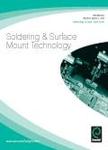版权所有:内蒙古大学图书馆 技术提供:维普资讯• 智图
内蒙古自治区呼和浩特市赛罕区大学西街235号 邮编: 010021

作者机构:HengYang Normal Univ Dept Comp Sci Hengyang Peoples R China Chinese Acad Sci Natl Lab Pattern Recognit Inst Automat Beijing Peoples R China Univ Texas Pan Amer Dept Math Edinburg TX 78541 USA
出 版 物:《SOLDERING & SURFACE MOUNT TECHNOLOGY》 (焊接与表面固定技术)
年 卷 期:2016年第28卷第2期
页 面:114-122页
核心收录:
学科分类:0808[工学-电气工程] 0806[工学-冶金工程] 08[工学] 0805[工学-材料科学与工程(可授工学、理学学位)] 0802[工学-机械工程]
基 金:National Natural Science Foundation of China Scientific Research Fund of Hunan Provincial Education Department [14B025, 13C074] Science and Technology development project of HengYang [2015KJ28] Key Construction Disciplines of the Hunan Province during the Twelfth Five-Year Plan Period Open fund project of Hunan Provincial Key Laboratory for Technology and Application of Cultural Heritage Digitalization [JL14K04] Open Projects Program of National Laboratory of Pattern Recognition
主 题:Noisy solder joint imagery Compressive sensing (CS) Convex optimization Gradient-based method Orthogonal matching pursuit Greedy basis pursuit Subspace pursuit and compressive sampling matching pursuit Iterative re-weighted least squares
摘 要:Purpose - The purpose of this paper is to develop a compressive sensing (CS) algorithm for noisy solder joint imagery compression and recovery. A fast gradient-based compressive sensing (FGbCS) approach is proposed based on the convex optimization. The proposed algorithm is able to improve performance in terms of peak signal noise ratio (PSNR) and computational cost. Design/methodology/approach - Unlike traditional CS methods, the authors first transformed a noise solder joint image to a sparse signal by a discrete cosine transform (DCT), so that the reconstruction of noisy solder joint imagery is changed to a convex optimization problem. Then, a so-called gradient- based method is utilized for solving the problem. To improve the method efficiency, the authors assume the problem to be convex with the Lipschitz gradient through the replacement of an iteration parameter by the Lipschitz constant. Moreover, a FGbCS algorithm is proposed to recover the noisy solder joint imagery under different parameters. Findings - Experiments reveal that the proposed algorithm can achieve better results on PNSR with fewer computational costs than classical algorithms like Orthogonal Matching Pursuit (OMP), Greedy Basis Pursuit (GBP), Subspace Pursuit (SP), Compressive Sampling Matching Pursuit (CoSaMP) and Iterative Re-weighted Least Squares (IRLS). Convergence of the proposed algorithm is with a faster rate O(k*k) instead of O(1/k). Practical implications - This paper provides a novel methodology for the CS of noisy solder joint imagery, and the proposed algorithm can also be used in other imagery compression and recovery. Originality/value - According to the CS theory, a sparse or compressible signal can be represented by a fewer number of bases than those required by the Nyquist theorem. The new development might provide some fundamental guidelines for noisy imagery compression and recovering.